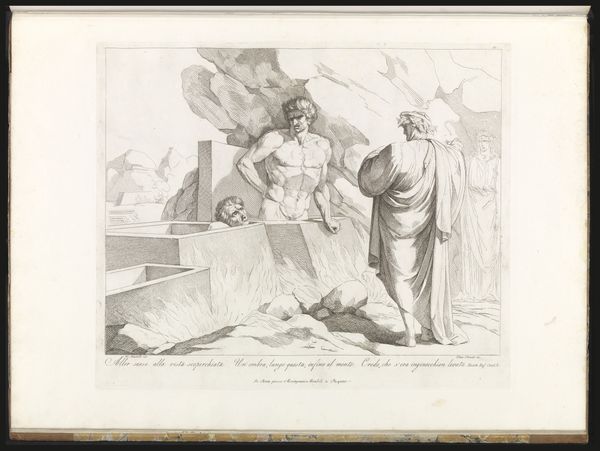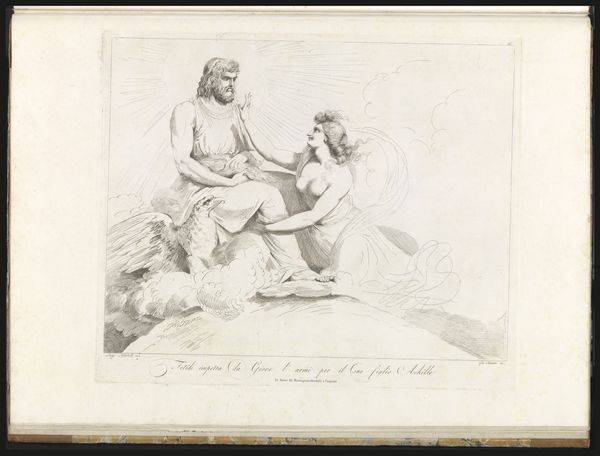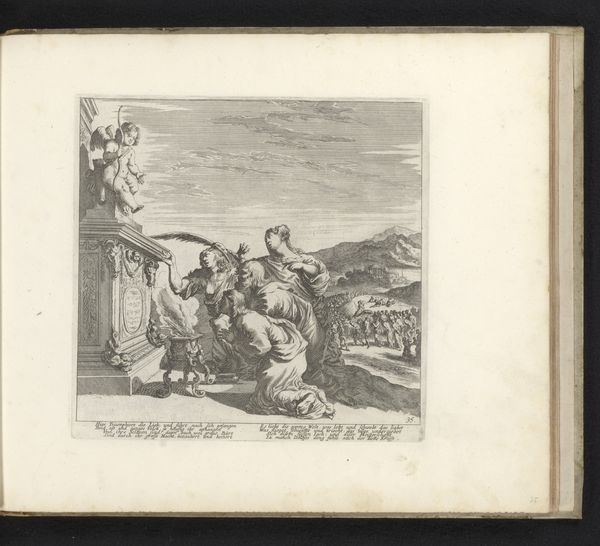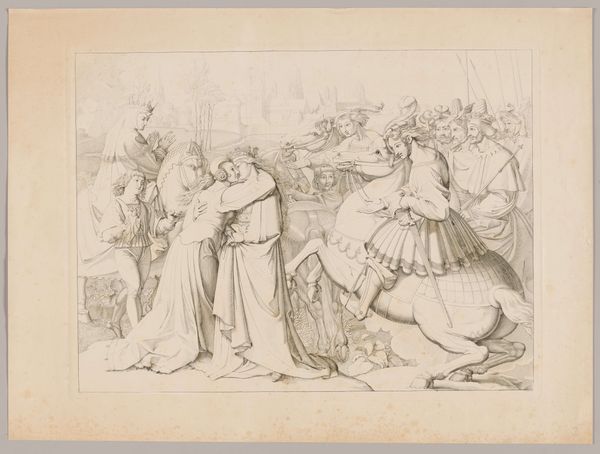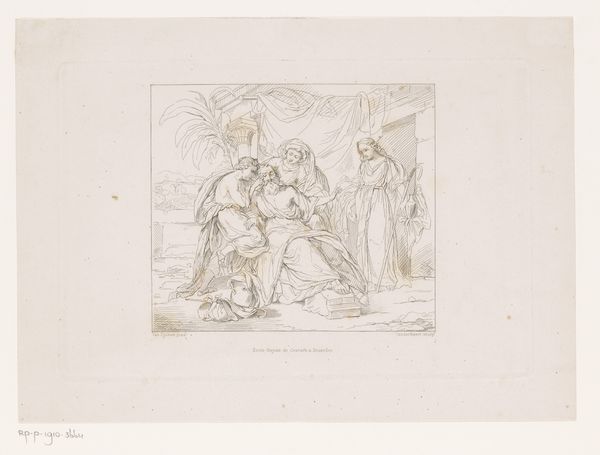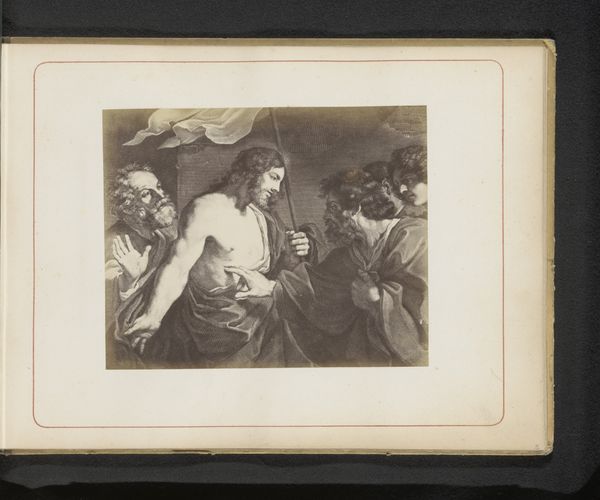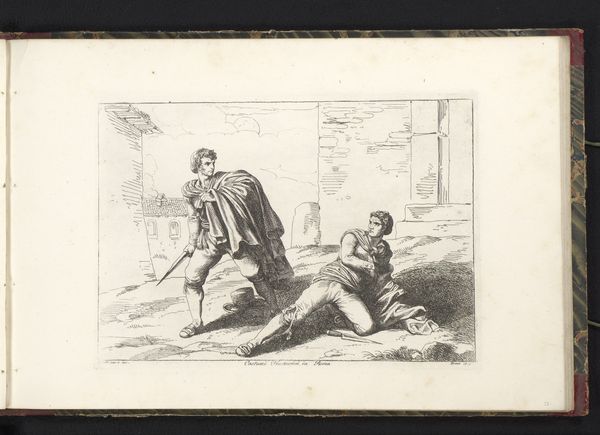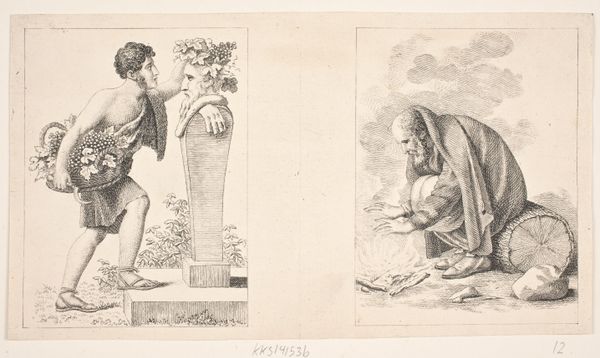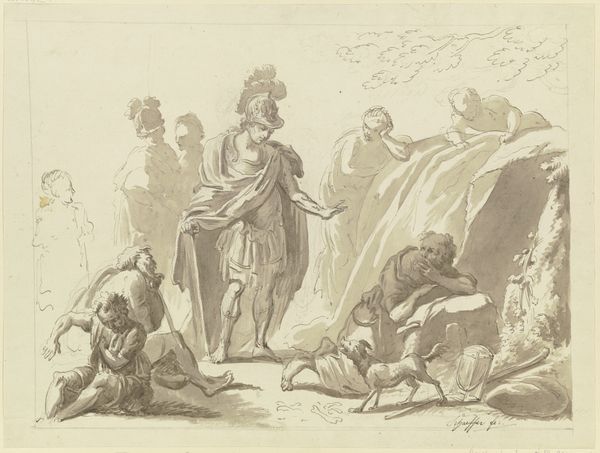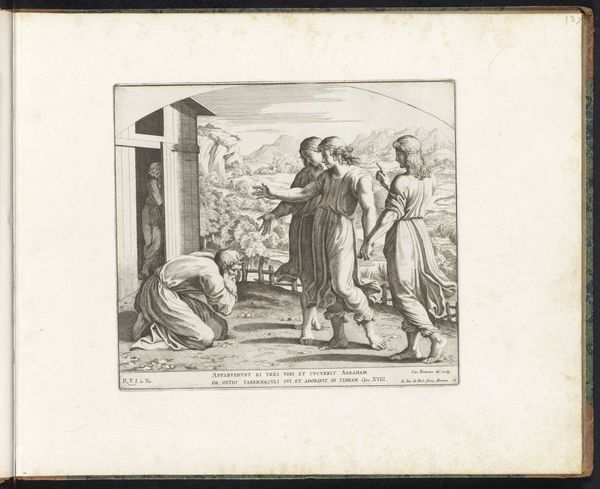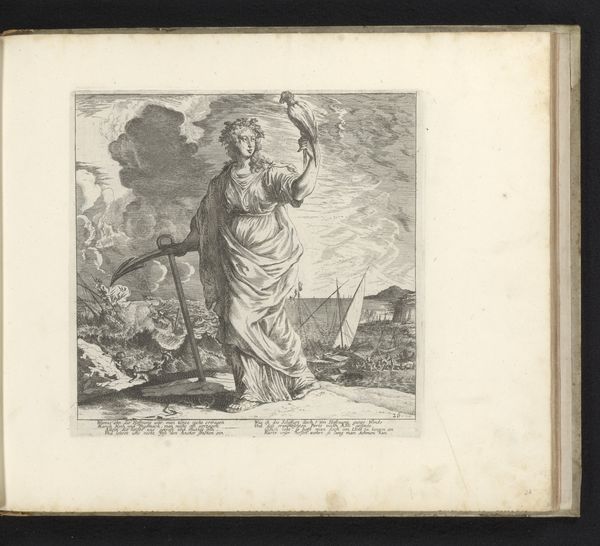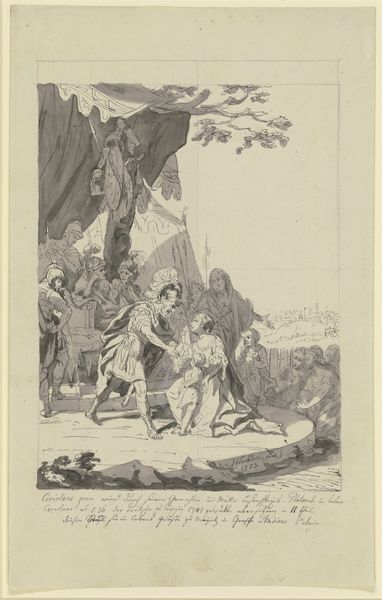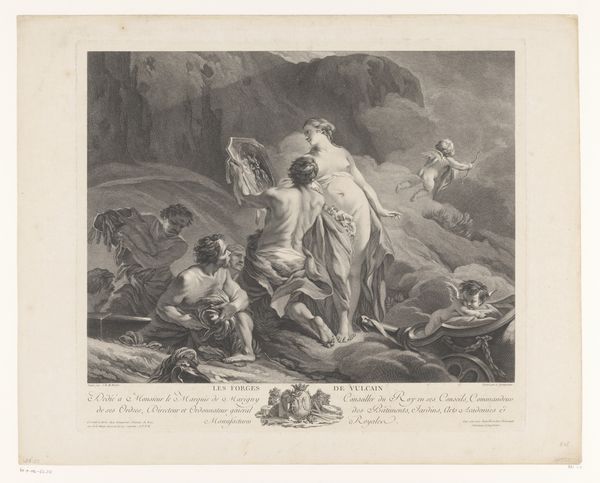
drawing, paper, ink, engraving
#
drawing
#
ink drawing
#
narrative-art
#
figuration
#
paper
#
ink
#
romanticism
#
history-painting
#
engraving
Dimensions: height 414 mm, width 591 mm
Copyright: Rijks Museum: Open Domain
Curator: This ink drawing by Luigi Sabatelli from 1804 depicts a scene from Dante’s Inferno titled: "Traitors in the Ice of Cocytus." What’s your first reaction to it? Editor: Chilling, literally. It's bleak. The thin lines of the engraving enhance this sensation. There’s a striking sense of cold desolation conveyed through this image. It reminds us of Romanticism's interest in the sublime. Curator: Absolutely. Sabatelli clearly understood Dante's symbolism. Cocytus, the frozen lake of the ninth circle, is where the worst traitors are condemned. Look at the figures locked in ice, only their faces visible. Their anguished expressions speak of utter isolation. Editor: Yes, and that central pair—one gnawing at the other’s head—is particularly gruesome. I imagine viewers in Sabatelli's time, familiar with Dante’s text, would have immediately recognized the reference to Count Ugolino and Archbishop Ruggieri. The political implications must have resonated deeply. Curator: Precisely! The act of betrayal held immense political and cultural significance. Sabatelli is visualizing not just the act itself, but the eternal consequences—the inescapable perpetuation of their hate. It is worth noticing how distant Dante and Virgil look away from them. Editor: The composition further reinforces that detachment, doesn’t it? Dante and Virgil stand as observers. The rock behind them suggests their removal from it. Their cloaks ripple slightly. But nothing touches those damned figures except themselves. Curator: Yes, as distant witnesses. Note, too, how the artist chose ink and engraving to depict such a hellscape. It amplifies a sense of moral darkness but also evokes classical traditions of visualizing damnation. Editor: Indeed. The historical context, a time of immense social upheaval, surely influenced its reception, infusing the theme of treachery with greater weight. Curator: Examining Sabatelli's image shows how Romanticism tapped into literature to expose uncomfortable truths. Editor: Exactly, and it also highlights how a well-known story could comment upon cultural realities that the viewers would grasp instantly. Curator: A potent demonstration of how symbols can capture, and convey lasting power, isn’t it? Editor: Undeniably. Looking closely connects you to a long tradition of artistic engagement with this epic poem.
Comments
No comments
Be the first to comment and join the conversation on the ultimate creative platform.
